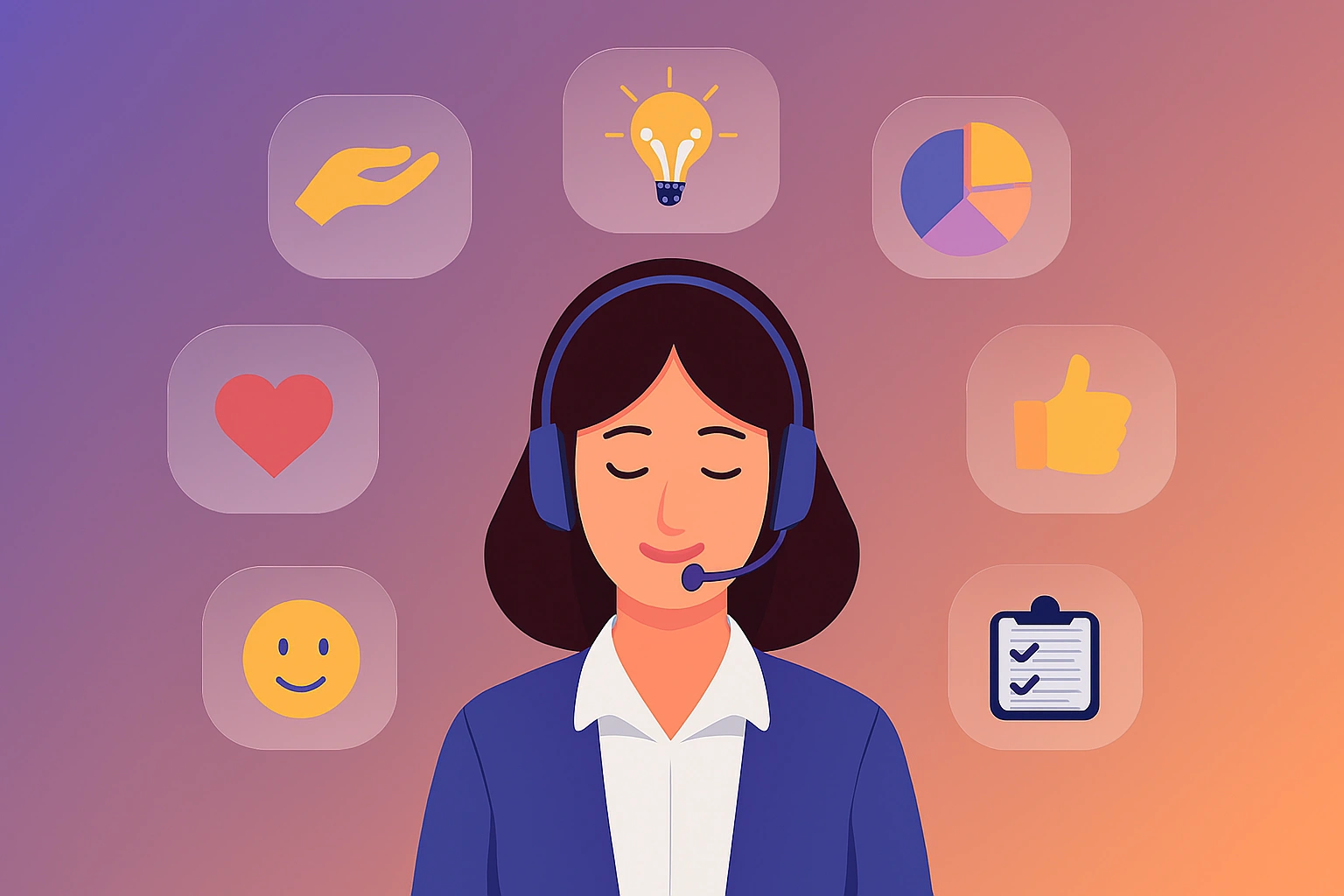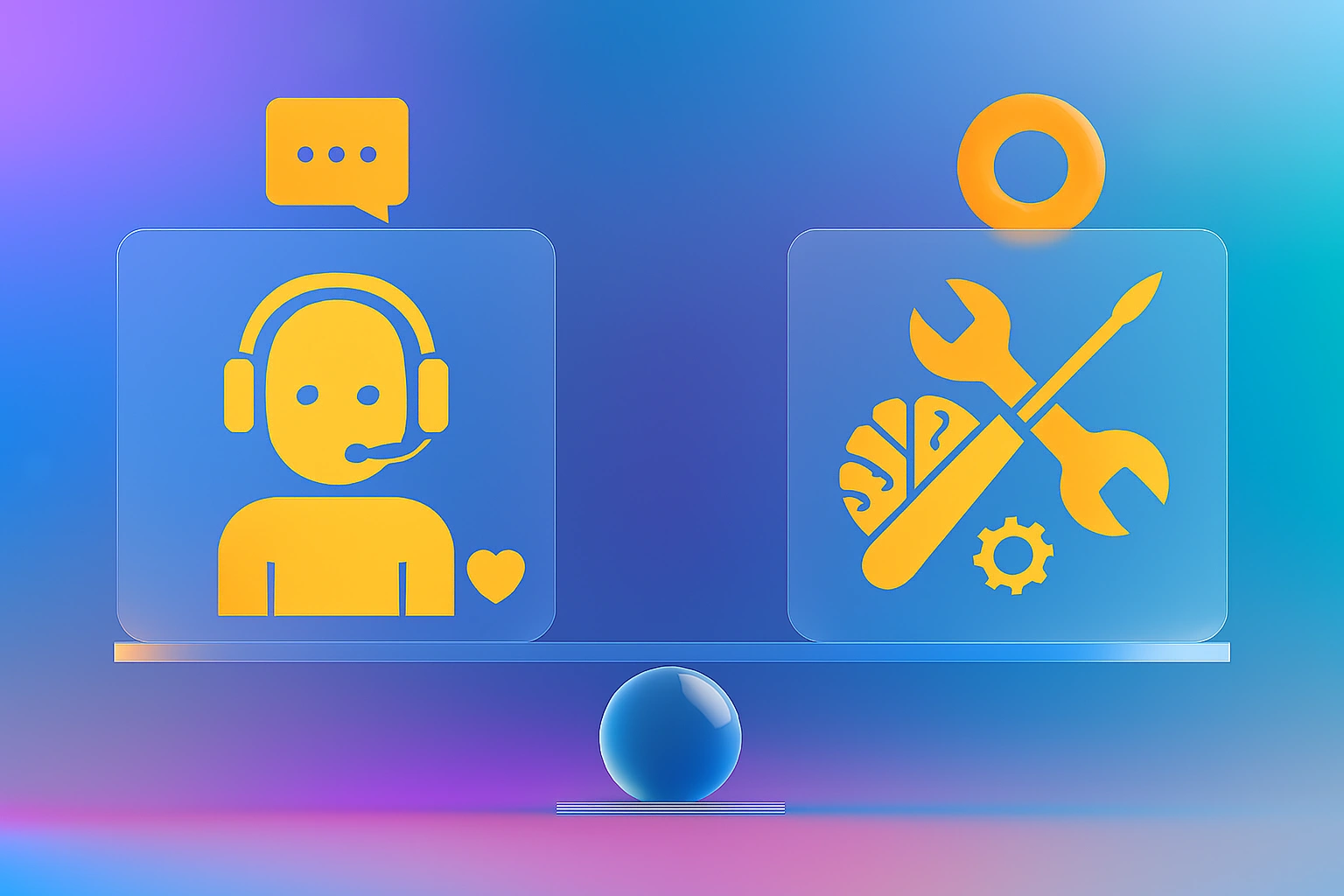How to Improve Net Promoter Score? 8 Proven Strategies & Tips
- November 10, 2017
- 14 mins read
- Listen

According to the London School of Economics, “An average NPS increase of 7% correlates on average with a 1% growth in revenue.”We promise that by the end of this article, you’ll know that NPS isn’t just a vanity metric, and you’ll have learned enough tips to improve net promoter score for your business.
What is Net Promoter Score?
Walt Disney once said, do what you do so well that they want to see again and bring their friends. He understood the incredible value of customers who actively recommend a company. NPS is a measurement system that helps companies track and increase the likelihood of customers recommending an organization. NPS begins by asking customers a simple question, “How likely are you to recommend this company to a friend or a relative?”8 Proven Strategies to Improve Your Net Promoter Score (NPS)
Improving net promoter score (NPS) is crucial for businesses as it helps to convert your customers into brand promoters. Having a strong NPS automatically translates into loyal customers which in turn helps to build your brand credibility and increase customer lifetime value.Let us explore the top 8 tips and action plans for improving the net promoter score (NPS).1. Focus on better customer experience (CX)
Customer experience (CX) is incredibly valuable for all businesses.People recommend products/services due to the exceptional experience they receive from the brand.Net Promoter Score (NPS) is the key metric that shows you how well your business is able to keep your customers happy. A low NPS score might indicate a higher percentage of dissatisfied customers. NPS offers an overall indication of customers’ CX perception, but managers need actionable insights. A customer-centric brand can complement the NPS survey with other metrics for comprehensive and actionable CX insights.For example, omnichannel retailers can use the latest Omnichannel Customer Experience survey (OCX scale) to identify the factors contributing to a low NPS score.The OCX scale captures CX across nine distinct dimensions: social communications, value, personalization, customer service, consistency of both product availability and prices across channels, information safety, delivery, product returns, and loyalty programs. When the comprehensive OCX survey complements an NPS survey, a customer-centric omnichannel retailer can identify which dimensions out of the nine key CX dimensions need improvements. How does being customer-centric help brands improve net promoter scores?
- Identify customer needs- Knowing your customers’ needs and expectations and aligning your solutions closely encourages customers to be loyal to your brand and increases the satisfaction rate.
- Understand your customer journey– When you learn about your customer journey, you can improve consistent service across all the touchpoints and deliver a consistent omnichannel customer experience.
REVE Chat offers an omnichannel customer engagement platform for businesses to provide personalized support by understanding their journey and knowing their needs. Sign up today to learn more.
2. Deliver great customer support
Excellent customer support is the make-and-break point for every business. No matter, if you have a great product, but your service quality is not up to the mark, you can easily lose customers over it. Superior customer service does not just happen overnight. It is harder to achieve but certainly not impossible. Implementing live chat is a great way to assist customers at the moment they need it the most. Providing instant responses means happy customers and a reduced burden on your support team.
Statista Research says, “Global customer satisfaction rates with live chat usage are higher across every industry.” Providing an immediate response to customers when they reach out to you is critical as it directly impacts their satisfaction.How does live chat help in improving the NPS score?
- Faster response time: With live chat, you deliver immediate sales & support assistance by using canned answers for FAQs. You can also route the chats to the right teams to improve response time and boost customer satisfaction.
- Instant resolution: By implementing live chat, you can address customer concerns in real-time. When customers get instant and effective assistance they are happy with your service. For example, with REVE live chat you can provide real-time and immediate support for every channel your business has.
3. Help your customers with live engagement
One important way of improving the net promoter score (NPS) is by reducing response time and average handling time (AHT). Customers expect faster answers to their queries and problems. If you are able to deliver faster customer support, you are able to meet their expectations and translate into valuable word-of-mouth advocacy for your brand.If support tickets stay open longer than average, it indicates poor customer experience. It leaves a bad impression on your brand as a whole.Being able to engage with customers in real-time is a part of a well-planned customer engagement strategy. Support agents can use live engagement tools such as co-browsing solutions and video chat for quick identification of errors as a part of the action plan to improve NPS.
 Co-browsing helps in providing step-by-step guidance in real time, agents can collaborate along with customers until their query is completely resolved, guiding them through the entire process. Keyways to reduce response time and improve the NPS score with live engagement tools:
Co-browsing helps in providing step-by-step guidance in real time, agents can collaborate along with customers until their query is completely resolved, guiding them through the entire process. Keyways to reduce response time and improve the NPS score with live engagement tools:- Complex online forms can lead to customer abandonment. With the co-browsing solution, you can guide customers to fill up forms or applications successfully by taking control of their browser.
- Video chat helps to identify the issues faster, deliver effective solutions, and reduce the number of touchpoints. You can improve brand credibility by gaining customer trust by having personalized conversations.
REVE Chat offers a complete suite of live customer engagement tools that empower businesses to learn the issue faster and provide personalized solutions in real time. Sign up with REVE Chat collaborate with customers in real time and strengthen your relationships.
4. Work on customer feedback to improve the NPS score
Collecting customer feedback is not enough. Feedback becomes effective when they are scrutinized, analyzed, and implemented to build a stronger brand. Customers are curious to know if their feedback is valuable to your business or not. When you regularly collect feedback, it can help you achieve a good net promoter score for your business. Generally, the NPS survey includes the common question, “From 1 to 10, how likely are you to recommend the agent to a friend or colleague?” NPS helps to categorize all customers into three groups: promoters, passives, and detractors. It gives a clear view to the employees throughout a company to see right away whether a customer experience was a success or a failure and why.You can segment NPS feedback by important business drivers and look into the qualitative feedback. It makes it easier to allocate resources to improve NPS. For example, you might pay more attention to feedback from customers who spend a lot of money on your products and services, vs those that are occasional purchasers or are on a free plan.Pro tip:You can add one more question, “In what ways could your experience have been better?”. This question invites the customer to leave honest feedback. It shows them you are interested in knowing how their experience could have been better. This encourages them to provide you with valuable feedback that can be used to create a strategic approach to deliver an enhanced CX.
NPS helps to categorize all customers into three groups: promoters, passives, and detractors. It gives a clear view to the employees throughout a company to see right away whether a customer experience was a success or a failure and why.You can segment NPS feedback by important business drivers and look into the qualitative feedback. It makes it easier to allocate resources to improve NPS. For example, you might pay more attention to feedback from customers who spend a lot of money on your products and services, vs those that are occasional purchasers or are on a free plan.Pro tip:You can add one more question, “In what ways could your experience have been better?”. This question invites the customer to leave honest feedback. It shows them you are interested in knowing how their experience could have been better. This encourages them to provide you with valuable feedback that can be used to create a strategic approach to deliver an enhanced CX.5. Segment your customers for better planning
NPS surveys are a great way to segment your audience and create tailor-made strategies to address each segment. You can segment audiences based on revenue, products, service plans, or customer personas.Once you segment customers, you can focus your value proposition across marketing, sales, and service experiences to address their needs and improve your customers’ experiences. A well-defined NPS hierarchy enables a coordinated and well-planned execution of the NPS plan.Customer segmentation is important for understanding your customers. NPS naturally segments customers into three categories. They are Detractors (customers scoring between 0 and 6), Passives (customers scoring between 0 and 8), and Promoters (customers who respond with 9 or 10). How to tailor strategies based on audience segmentation to improve NPS score:
How to tailor strategies based on audience segmentation to improve NPS score:- The benefit of the NPS survey is that you can create tailor-made strategies to address each segment. You can gain valuable insights into your segments and leverage NPS data better. You can then fine-tune your service experiences to address customer complaints and improve customer experiences.
- You can develop different strategies for the detractors who rate you a six to convert them into promoters. You can try to delight them and push to convert them into promoters.
- You can encourage promoters to advocate for the business and use NPS to boost customer referrals – you can encourage your promoters with the right incentives.
6. Measure customer feedback regularly to improve NPS
Keeping a regular check on the scores is an important way how to improve net promoter score (NPS). No matter if your scores are consistently good, still you need to monitor and measure them regularly.Making improvements continuously based on the score results you can witness positive results and failing to do so will impact your loyalty.The core essence of NPS rests in the customer insights gained through surveys, based on which you can develop strategies to improve customer loyalty. Improving your NPS means converting your passives and detractors into promoters with your efforts and keeping your promoters happy. In order to do that, you need to offer an excellent customer experience that includes a prompt response, valuing customer feedback, and providing consistent service across all your touchpoints.
7. Provide self-service options
Self-service is becoming an increasing mode by which customers are looking to resolve problems and learn more. Customers are not just ready for self-service but actually prefer it over assisted service.92% of customers say that they would use a knowledge base for self-service support if it was available.Customers want their problems to be solved promptly and feel that searching for the answer themselves is quicker than reaching out to the support team. Furthermore, self-service improves customer knowledge, as it allows them to resolve problems at their speed and learn as much or as little as they want.
- By providing self-service options such as FAQ pages or product videos, you can help customers find answers on their own at the moment when they want it.
- You can offer personalized information to your customers that helps in easy understanding and develop trust in your brand
8. Improve your products & services
One of the key aspects of the NPS improvement plan is to enhance the products and services. A high NPS score indicates more customers are happy with the brand and that they are much more likely to stick around with it because they like its products and services.How to improve net promoter score by upgrading the products and services:- Good products & services develop a positive perception and increase customer satisfaction.
- A better experience with your brand encourages customers to remain with your business for a lifetime.
Why Improving NPS Matters?
Let’s talk about why improving your Net Promoter Score (NPS) makes a difference.Grow your revenue
A high NPS means you’re building a base of loyal customers who keep coming back. These are the customers who spend more, stick with you over time, and are open to trying new products. So, by focusing on NPS, you’re setting yourself up for real revenue growth that’s sustainable.Cut service costs
Loyal customers don’t need as much hands-on support. They’re already familiar with your brand, which means your team can spend less time on them, and you can save on service costs. Those savings can go back into other parts of your business, letting you keep things running smoothly and efficiently.Reduce business risks
Satisfied customers are much less likely to leave you. So when your NPS is strong, you’re creating a steady customer base that’s here to stay. This stability lowers the risk of sudden revenue loss and helps you plan for consistent growth—something every business needs.Boost customer value
The happier your customers are, the longer they’ll stick around, which raises their lifetime value. A high NPS means your customers aren’t just sticking with you; they’re exploring more of what you offer, trying out additional products and services, and becoming even more valuable over time.Keep more customers
When your customers have a great experience, they’re less likely to jump ship to a competitor. A strong NPS shows they’re happy, trust your brand, and are willing to stay with you. This boosts retention rates and saves you from having to constantly replace lost customers, which also strengthens your overall customer loyalty.Make things easier for customers
Customers who are truly happy find it easy to work with you. They know how to navigate your brand, which means less friction and more positive word-of-mouth. By lowering their effort, you’re creating a seamless experience that keeps them coming back and telling others about you.How REVE Chat Can Help You Improve Your Net Promoter Score?
Improving your Net Promoter Score (NPS) is all about creating experiences that build trust and satisfaction. With REVE Chat’s comprehensive features, you can deliver just that.Live Chat for instant support
Our live chat enables real-time assistance, helping your team respond to customer needs instantly. This prompt response builds trust and satisfaction, directly impacting your NPS.Chatbot for 24/7 availability
REVE Chat’s AI-powered chatbot ensures customers always receive answers, even outside business hours, improving convenience and customer loyalty.Omnichannel presence
Connect with customers seamlessly across platforms, creating a consistent, hassle-free experience no matter where they reach out. This accessibility is key to retaining loyal, satisfied customers.Comprehensive agent and bot engagement analytics
Understanding what’s working and where there’s room to grow is key to improving your NPS. REVE Chat’s in-depth analytics provide insight into both agent and bot performance.- Track Key Metrics: Monitor average response time and average resolution time to assess agent efficiency. You can see all these insights to improve your net promoter score:
- First Response Insights: Evaluate first response time to ensure timely customer interactions.
- SLA Breach Monitoring: Identify SLA breaches to maintain service quality and compliance.
- Customer Satisfaction Scores: Measure customer satisfaction to understand client perspectives and improve service.
- Optimize Performance: Use insights to enhance agent performance and boost overall customer satisfaction.
Dynamic actions for personalization
Real-time dynamic actions allow you to tailor responses based on customer behavior, showing customers that they’re truly understood and valued. This personalized touch can make customers feel valued and understood, driving up satisfaction and, ultimately, your NPS.Advanced reporting for continuous improvement
REVE Chat’s advanced reporting gives you the data needed to optimize interactions and continuously elevate customer satisfaction, setting the stage for a higher NPS.Final Thoughts on How to Increase Net Promoter Score
Net promoter score (NPS) is an important metric to understand how your business is performing. A higher score indicates that your customers are happy with your brand and overall experience. NPS is not only focused on business revenue but also on satisfying customer needs. It is a qualitative measure to have long-term customer relationships. By delivering great customer support, you can boost your NPS scores and build stronger relationships effectively.With the REVE Chat live chat platform, you will understand how well you are able to meet your customer expectations and set goals accordingly. Sign up and get to know how well you can improve your net promoter score.
Frequently Asked Questions
To improve your net promoter scores follow these-
1. Contact your detractors and passive customers
2. Inform and train your staff
3. Listen to customer feedback and make improvements
4. Give rewards to your promoters
5. Measure and communicate results constantly
6. Investigate your competitors’ offer
7. Improve your products & services
8. Use live chat & AI chatbot tools to improve customer experience
NPS is influenced by customer service quality, product reliability, brand reputation, ease of use, and how well a company meets customer expectations.
A good NPS score is typically 30–50. Scores above 50 are excellent, and above 70 are outstanding, indicating strong customer loyalty.
You can track NPS by surveying customers with the question, “How likely are you to recommend us?” And then you can calculate NPS by subtracting the percentage of detractors (0–6 ratings) from promoters (9–10 ratings).
The purpose of NPS (Net Promoter Score) is to measure customer loyalty and satisfaction by identifying how likely customers are to recommend a company’s product or service. It helps businesses gauge overall customer sentiment, uncover areas for improvement, and track loyalty trends over time. A high NPS indicates strong customer loyalty, while a low score can highlight areas that need attention to improve customer experience and retention.




